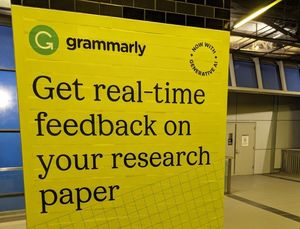There is a significant – if little read – literature of cataloging theory. A recurrent theme is the balance between gathering like items, and discriminating between them. Managing similarity and difference in this way, and making sensible user interface choices, is not straightforward.
The FRBR model represents a recent approach to a part of this question: how to gather things that are in some way instances of the same intellectual work (a discretionary decision at the edges*), and how to distinguish sensibly between these things (critical editions, for e.g, or translations, etc).
We now have a variety of online systems which present data about ‘book-like objects’. They have to make user experience decisions about how best to represent works and their instances.
Interestingly, Goodreads** and LibraryThing seem to default to a work-based view: the entry is at the work level. See for example Dr Zhivago and Dr Zhivago.
Amazon seems to default to a particular ‘manifestation’ or ‘expression’ (to use FRBR terms) as in Dr Zhivago. Google Books seems to do something similar – Dr Zhivago. In each case, though, there is an attempt to link to other editions etc from a particular page.
Worldcat.org is more like Amazon and Google. At the moment, it aims to show the most highly held member of a work set in a result, and then link to other editions from that, as in Dr Zhivago.
There are reasons for taking these various approaches and each service make decisions based on what it is trying to do, and the view it takes of its user interests.
Now, although the idea of a work has been a library concept for some time, the ‘manifestation’ level has tended to dominate practice, and this has carried forward into online catalogues. The catalog card, and the MARC record, are typically at the manifestation level and systems have been very ‘record-based’. They have not done a lot to re-combine the manifestation-level data to present other types of user experience than a record-by-record results display. The main exception to this may be an author-based approach. But typically, local systems have not sought to cluster data into works, or into displays about place or subject, the various things about which they have data.
Worldcat Identities is one response to this. It aims to pull data from multiple records to create a page which records what we know about a particular identity, Boris Pasternak, for example. Goodreads or LibraryThing will also give you a Boris Pasternak page based on what they know about him. (The National Library of Australia’s People Australia is also interesting in this regard. See for example, Patrick White.)
More recently, OCLC Research has been experimenting to see what data is available for display in a consolidated way at the work level. See a sample set of pages here, and some background detail here [pdf].
* A note on ‘discretionary’. We cluster stuff based on aggregate cataloger choices. I like Tim Spalding’s characterization of the ‘cocktail party test’ in a blog entry about works and LibraryThing.
** See the comment by Alex Thurman on Goodreads, suggesting it is more like Amazon.
Share
Comments



